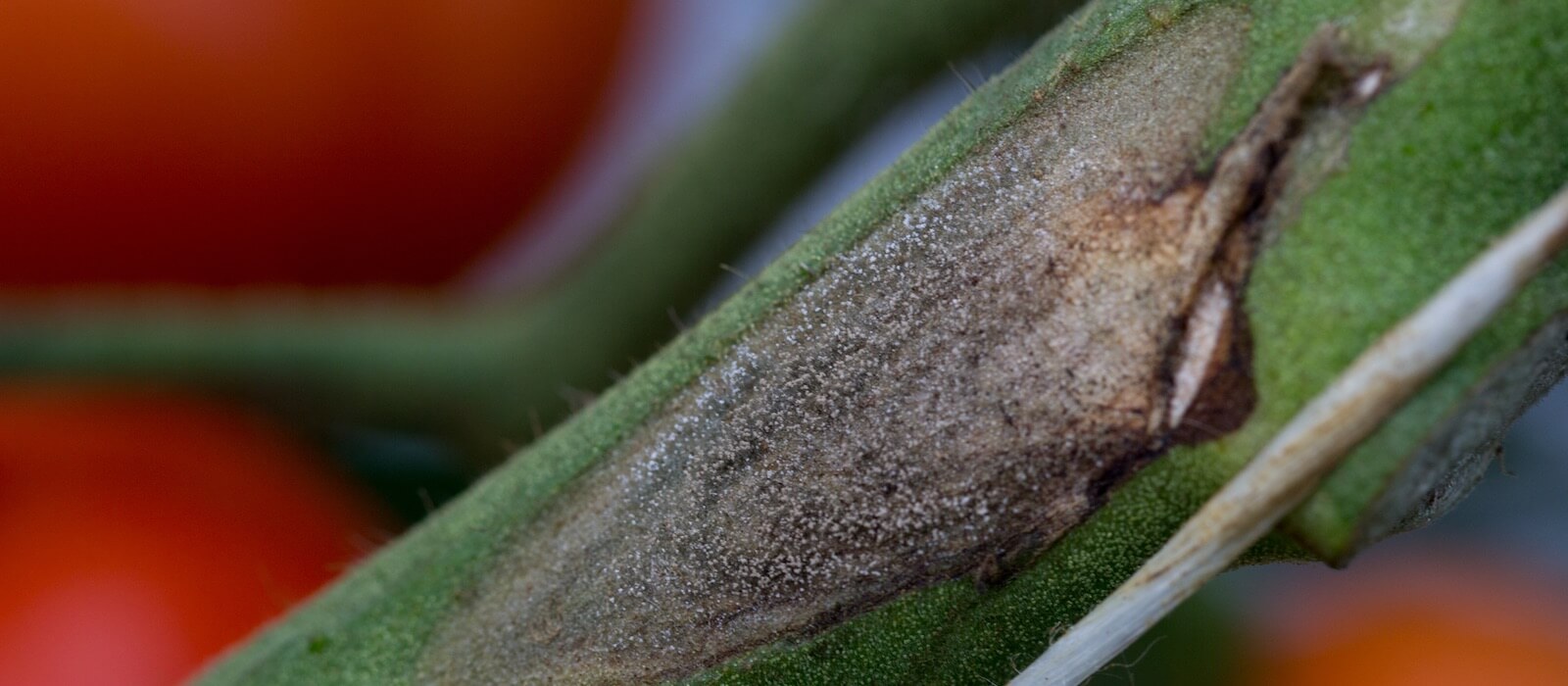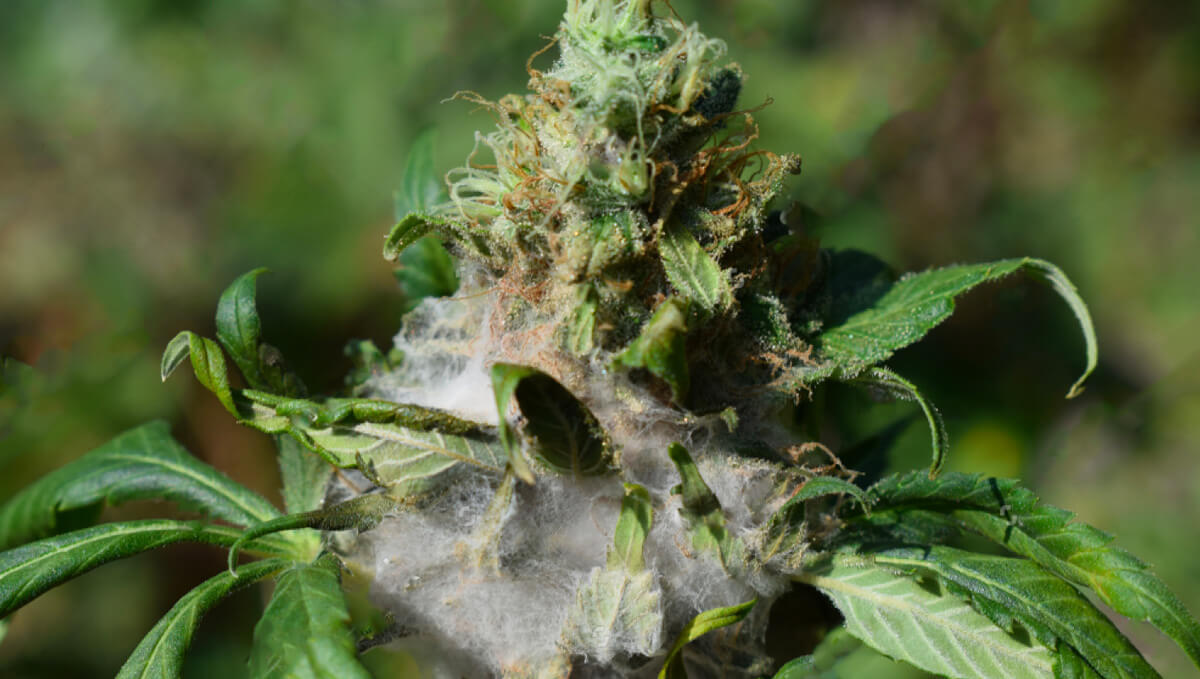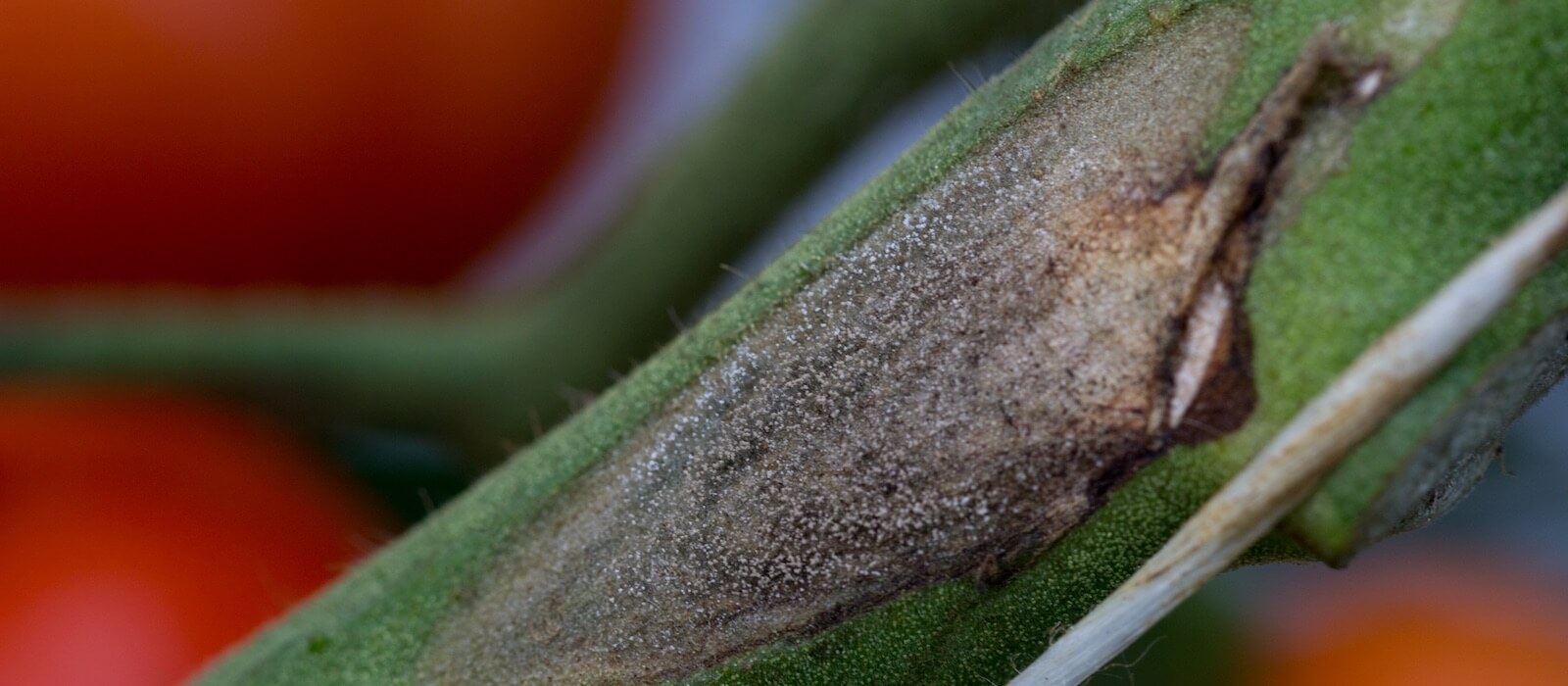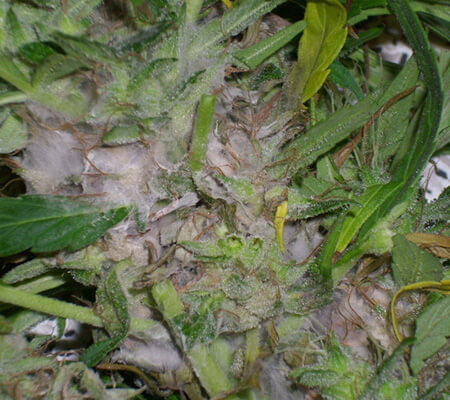
Podredumbre gris
Gray Rot
Botrytis Cinerea
Pathogen:
Fungus
Type:
Risk to the plant:
INTERMEDIATE



DESCRIPTION
WHO CAUSES IT?
Botrytis cinerea is a filamentous fungus that causes the disease known as gray mold or botrytis. This pathogen is a common problem in a wide variety of plants, including cannabis. It is characterized by developing a grayish layer of mycelium on the leaves, stems, flowers and fruits of the plant, which can spread quickly if not properly controlled.
SYMPTOMS
Symptoms of botrytis in cannabis include brown or necrotic Taches on leaves, stems and flowers, covered with a grayish layer of mycelium. As the disease progresses, these Taches can expand and rot the plant from within, causing a deterioration in crop quality and, in severe cases, total crop loss.



TEMPERATURE AND HUMIDITY
15°C - 25°C
80% - 95%

HOW IS IT SPREAD?
Wind, direct contact, transport of plant material.

HOW TO REMOVE IT?
Home remedies
There are no home treatments
Chemical treatments
• AZOXISTROBIN 25% [SC] P/V
• CIPRODINIL 37.5% + FLUDIOXONIL 25% [WG] P/P
• EUGENOL 3.3% + GERANIOL 6.6% + THYMOL 6.6% [CS] P/V
• PHENHEXAMIDE 50% [SC] P/V
• POTASSIUM HYDROGEN CARBONATE 0.425% [AL] P/V
• POTASSIUM HYDROGEN CARBONATE 85% [SP] P/P
• LAMINARIN 4.5% [SL] P/S
�• PIRACLOSTROBIN 6.7% + BOSCALIDE 26.7% ( ) [WG] P/P
• PIRACLOSTROBIN 6.7% + BOSCALIDE 26.7% (I) [WG] P/P
Treatments allowed in organic farming
• EUGENOL 3.3% + GERANIOL 6.6% + THYMOL 6.6% [CS] P/V
• POTASSIUM HYDROGEN CARBONATE 0.425% [AL] P/V
• POTASSIUM HYDROGEN CARBONATE 85% [SP] P/P
• LAMINARIN 4.5% [SL] P/S
Insect allies
PREDATORY MITES
LADYBUGS
LACEWINGS
PARASITIC WASPS
HOVERFLIES OR PARASITIC FLIES
PREDATORY BUGS
There are no natural allies
Mycodiplosis oidii (predatory mosquito)
EFFECTIVE PRODUCTS TO ELIMINATE THIS DISEASE
Sponsored link
Sponsored link
Sponsored link
Sponsored link
Sponsored link
Sponsored link
Sponsored link
Sponsored link
Sponsored link
Effective against all types of fungi
Sponsored link
Sponsored link
Sponsored link
Sponsored link
Sponsored link
Sponsored link
Sponsored link
To prevent and control botrytis in cannabis crops, it is essential to maintain optimal growing conditions that reduce humidity and improve air circulation around the plants. In addition, it is recommended to avoid excessive watering and overcrowding of plants, regularly remove infected leaves and flowers, and apply specific fungicides when necessary.
























